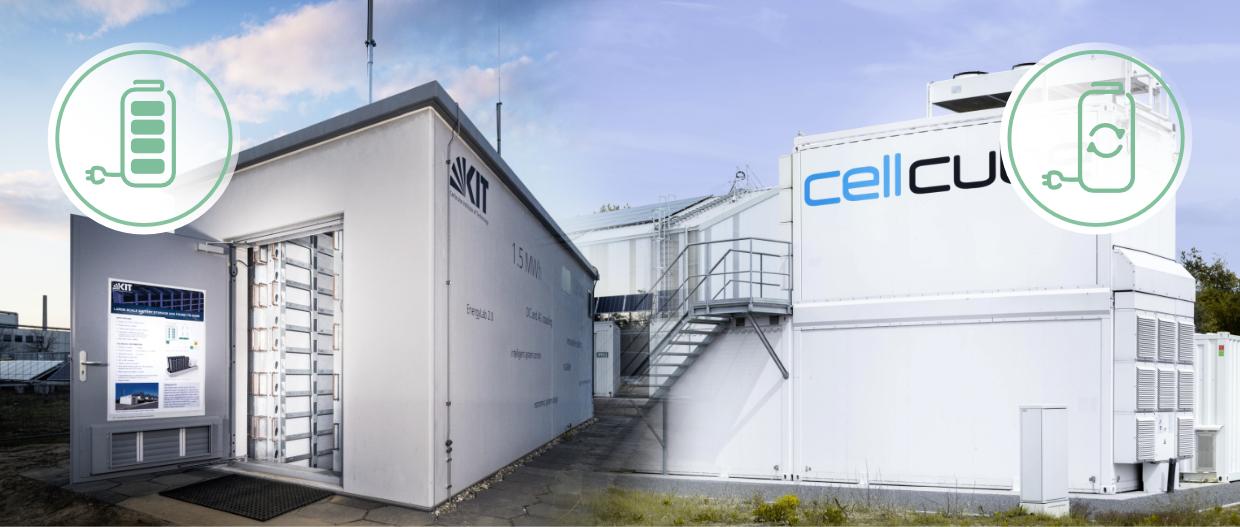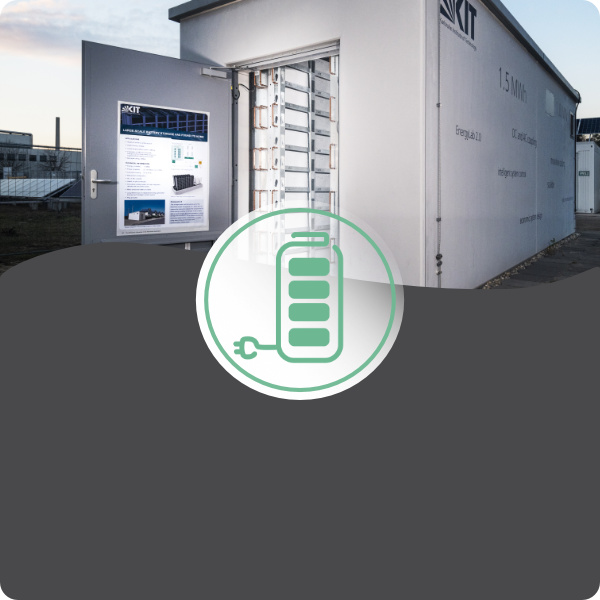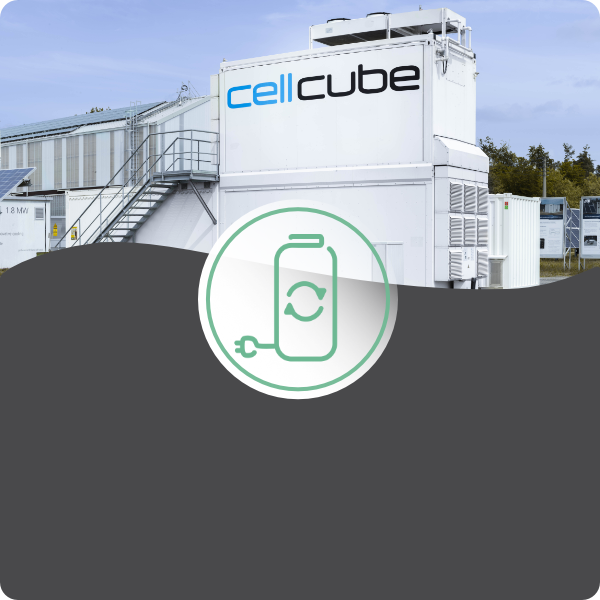Lithium-ion batteries have now found their way into our everyday lives, but large-scale storage systems based on lithium-ion technology have long been a niche product and rarely economically viable. This is changing both due to the expansion of lithium-ion cell production and its availability and due to the increasing demand for storage in the grid for the expansion of renewable energies. KIT has been conducting research in this area for several years. With the construction of new large-scale storage systems at the Energy Lab 2.0, new possibilities are open to researchers, in particular to improve the control of storage systems, their energy efficiency, and their economic use in the power grid.
Since lithium-ion batteries are very efficient short-term storage devices, at short notice, they can be used to bridge weather-related fluctuations in the production of solar or wind energy. The redox-flow battery – also known as a flow battery – is very well suited to store energy over several days, but is a less efficient energy storage device. The researcher analyze, evaluate and optimize the interaction of these two battery systems. In doing so, they primarily use the electric current from the nearby photovoltaic field.







